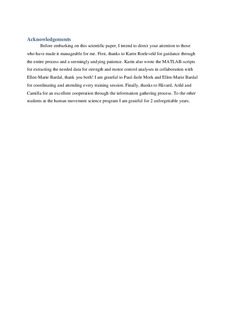The effects of aerobic exercise on pain, strength and motor control for women with fibromyalgia.
Abstract
Background: Earlier studies have demonstrated the potential of strength exercise for women with fibromyalgia in regulating central processes believed to be essential in the fibromyalgia etiology. Similar results have been presented for aerobic exercise in healthy sedentary women and healthy seniors. No previous study has been conducted on aerobic exercise and the effects on pain, strength and motor control for fibromyalgia, compared to matched control subjects.
Objective: To investigate the effects of a 12-week low to moderate aerobic exercise program on pain, strength, and motor control for 25 women with Fibromyalgia and 25 healthy controls, and to evaluate the possibility of global mechanisms affecting these factors.
Intervention: 12 weeks of supervised aerobic endurance on spinning ergometer bikes.
Main Outcome Measures: Pressure pain-thresholds (PPT) of the lower extremities and the neck area, voluntary strength of knee-extension, and arm abduction. Also, variation and frequency of variation of arm position during holding as properties of motor control.
Results: PPT was higher in CG than FMG for all measures (p < 0.05), and it was higher in the lower than upper body for both groups (p < 0.001). The CG was stronger than the FMG on both strength measures (p < 0.05). Frequency of variation of arm position showed group differences at baseline, but variation itself did not (p < 0.05). After the intervention period, the subjects showed increased lower body PPT (p < 0.05), a strong (> 20%) increase in knee extension strength (p < 0.001), and a minor (> 2%) increase in arm abduction strength (p < 0.01). There was also a similar change for both groups from baseline to post-intervention in the frequency of variation of arm position (p < 0.05).
Conclusions: Aerobic exercise has similar effects on strength, PPT and motor control for both groups. Cycling on spinning ergometer bikes is sufficient in improving strength of the lower extremities. There is no convincing indication that central factors are inhibiting the FMG in strength and position variation. The specific effects these factors have on frequencies of variation are uncertain. PPTs have no clear influence on strength or motor control for the FMG.
Key Words: Fibromyalgia, Aerobic exercise, Pain, Strength, Motor control.
